#Indian Wars
Explore tagged Tumblr posts
Text
smithsonianmag.com
How Recovering the History of a Little-Known Lakota Massacre Could Heal Generational Pain
Tim Madigan
46–59 minutes
To reach the place known as Mni Tho Wakpala, the Blue Water, you drive west from the Nebraska hamlet of Lewellen, turning from Highway 26 onto a gravel road and turning again through a gate that leads to fenced pastureland. The ancient cottonwood, now known by the Lakota Sioux as the Witness Tree, still towers above the grasslands. Blue Water Creek cuts a crooked path through a broad valley, its waters still pristine.
Then, just after sunrise on September 3, 1855, 600 U.S. Army soldiers commanded by Brigadier General William S. Harney surrounded and ambushed the village, the first time in the Indian wars of the Northern Plains that the military attacked a camp full of families. Today the attack is often known, to the extent it is known at all, as the Blue Water Massacre, but for more than a century it was remembered in a few conventional histories as a particularly ruthless U.S. military victory—the Army’s first major salvo in a 35-year campaign against the Lakota, lords of the Northern Plains, the people of Red Cloud, Sitting Bull and Crazy Horse, which ended finally with their subjugation at Wounded Knee in 1890. That episode, where as many as 300 Lakota were slaughtered, is widely known.
The same cannot be said about Blue Water.
The bloody chain of events had begun a year earlier, in mid-August 1854, when a lame-footed cow belonging to a Mormon settler wandered into the camp of the Brulé, also known as the Sicangu, one of seven bands that make up the Lakota nation. There, along the North Platte River in what is now Wyoming, the animal was felled by the arrow of a warrior named High Forehead, who may have been hungry.
The Brulé Lakota chief, Conquering Bear, hurried to nearby Fort Laramie and offered the Mormon a horse from his own herd as restitution. The matter might have ended there were it not for the ill-fated ambition of Lieutenant John Grattan, a 24-year-old Army officer a year out of West Point. Grattan was determined to personally arrest High Forehead and make his reputation in the process. On August 19, Grattan, with a drunken interpreter and a detachment of 29 soldiers, began a ten-mile march to the Lakota camp. Frontiersmen and other civilians they met along the way pleaded with the lieutenant to reconsider, as a small city of more than 4,000 Lakota had grown up by the North Platte. “I don’t care how many there are,” Grattan told them. “With 30 men I can whip all the Indians this side of the Missouri.”
When Grattan and his men marched into the village, Conquering Bear tried to reason with him, but the young officer made clear he would not leave without his prisoner. “For all I tell you, you will not hear me,” Conquering Bear finally said. “Today you will meet something that will be very hard.”
Surrounded by hundreds of Lakota warriors, a panicked U.S. Army soldier fired the first shot. Grattan and all but one of his men were swiftly killed. (The last soldier eventually succumbed to his injuries.) Grattan’s body was riddled by 24 arrows. Conquering Bear, one of three Lakota who were wounded, died from his injuries several days later.
News of the killings became an object of national outrage, though in the months to come congressional and Army reports placed the blame for what happened squarely on Grattan. That November, three Brulé Lakota warriors, later identified as Spotted Tail, Red Leaf and Long Chin, close relatives of the slain chief, attacked a mail coach traveling near Fort Laramie, killing three men, wounding a fourth, and reportedly making off with thousands of dollars in gold, an act of revenge per Lakota custom.
By then, President Franklin Pierce and his secretary of war, Jefferson Davis, had already endorsed a retributive expedition of their own against the Lakota. To lead it, Davis turned to Harney, an old friend who had experience fighting Native Americans in Florida and Wisconsin. In a White House meeting, Pierce gave Harney, a barrel-chested man with a long white beard, simple orders. “Whip the Indians for us,” the president said.
In August 1855, Harney and his men, equipped with new, long-range Sharps rifles, set out from a frontier fort. “By God I am for battle,” Harney told a fur trapper as he departed. “No peace!” By September 2, the troops were camped along the North Platte near a place called Ash Hollow, a popular stopping point for westward-traveling emigrants on the Oregon Trail. Harney learned that Chief Little Thunder, who had succeeded Conquering Bear after his death, was camped about six miles north by Blue Water Creek, a tributary of the North Platte.
As soon as the Brulé glimpsed Harney’s troops the women began to strike tepees, loading lodge poles, skins and other belongings onto travois, sledges drawn by horses and dogs. Seeing the people flee north, Harney feared his cavalry had insufficient time to set the ambush. To stall, he sent a guide to request a parley with Little Thunder. The chief quickly obliged, galloping toward the soldiers with two of his most renowned warriors, Spotted Tail and Iron Shell. According to one account, Little Thunder approached Harney holding an umbrella as a makeshift white flag.
The conversation took place over a distance of 30 to 40 feet. The general shouted his outrage for the killings of Grattan and his soldiers and the murders of the three men in the mail coach robbery. “The day of retribution had come,” Harney said.
Thirty minutes later, feeling delay was no longer necessary, the general sent Little Thunder back to his people. He gave his soldiers the order to open fire, then took up a viewing position atop a nearby hill.
What happened next was documented in Army after-action reports, in the private letters and journals of American soldiers, and in interviews they gave late in their lives. There was also one recorded account from the perspective of a Lakota survivor, a woman named Cokawin who was in her 40s at the time and gave her testimony many years later to another Lakota woman named Susan Bordeaux Bettelyoun. “The smoke of the battle blinded her,” Bettelyoun wrote in her own memoir, With My Own Eyes. “As she looked all around, she could see the soldiers galloping after groups of old men, women and children who were running for their lives. Some were running across the valley only to be met by soldiers and shot right down.”
As Cokawin tried to flee, a soldier shot her in the stomach. “The bullet ripped her open for about six inches, a glancing shot. … Her bowels protruded from the wound as she fell.” To hide, Cokawin covered herself in tumbleweed and tore off a piece of her sleeve to use as a bandage. “There she lay all day listening to guns roar and to the hoofbeats of the horses, the shouting and yelling of the soldiers who came so near at times that she thought she would be discovered. Once in a while she could hear a Sioux war cry. At these times, Cokawin said she felt like singing and giving the trill.”
Perhaps the most complete account of the massacre comes from the journal of a U.S. Army officer named Lieutenant Gouverneur K. Warren. The 25-year-old West Point graduate was a noncombatant, attached to Harney’s expedition as a mapmaker and topographer. Apparently appalled by the brutality he witnessed, he devoted several diary pages to describing the day’s horrors, particularly what he saw at bluff-side caves where many Lakota had sought safety. Soldiers, giving chase, fired indiscriminately into the caves, a barrage that went on until the cries of a child were heard from inside.
Warren wrote:
Wounded women and children crying and moaning, horribly mangled by the bullets … Two Indian men were killed in the hole … Seven women were killed … and three children, two of them in their mothers’ arms. One young woman was wounded in the left shoulder … Another handsome young squaw was badly wounded just above her left knee and the same ball wounded her baby in the right knee … I had a litter made and put her and her child upon it. I found another girl of about 12 years lying with her head down in a ravine and apparently dead. Observing her breath, I had a man take her in his arms. She was shot through both feet. I found a little boy shot through the calves of his legs and through his hams … He had enough strength left to hold me round the neck.
Warren described his attempts to minister to the wounded and his distress at the sounds of a Lakota mother wailing for her dead baby. “The feeling of sympathy for the wounded women and children and deep regret for their being so, I found universal,” Warren wrote. “It could not be helped.”
The story of a dying grandmother and one little boy—the son of the chief—became something of a legend among the Brulé. In 2005, exactly 150 years later, that story was recounted near the site of the massacre by the boy’s great-granddaughter, a Lakota elder and activist named Rosalie Little Thunder. “His grandmother’s blood dripped on him, but he stayed still when he heard all the hoofbeats, gunshots, cries, shouts,” she said to a group of relatives and others who had gathered for a commemoration. “He finally emerged after some silence. The Army spotted him and gave chase. He ran until he got over a little hill and found a burrow surrounded by tall grass. He hid there and stayed there until just before daylight, when it’s coldest and the dew forms. He emerged from there and started his trek—200 miles north to Sicangu country—to take word of the massacre.”
When it was over, 86 Lakota had been killed, many of them women and children. Four U.S. soldiers died. Harney confiscated tepees and buffalo meat for his expedition. The rest of the Lakota belongings were plundered or burned. Then the general marched 70 survivors, mostly women and children, some 140 miles across the grasslands to Fort Laramie. There he insisted that the perpetrators of the mail coach attack surrender. If they did not, Harney threatened to turn his captives over to the Pawnee, the Lakota’s mortal enemy.
That was why the warriors Spotted Tail, Long Chin and Red Leaf trotted on their horses into Fort Laramie a few weeks later. They were dressed in their finest regalia and sang their death songs when they surrendered, expecting to die at the end of a wasichu rope. Instead, they were taken into custody and imprisoned at Fort Leavenworth in Kansas. The next year, at the urging of the region’s Indian agent, President Pierce pardoned the Lakota warriors.
The bloody episode had divergent impacts on the Lakota. For some leaders it was a radicalizing event, evidence that the government could never be trusted—that violent resistance was the only path to meaningful tribal autonomy. One such leader was Crazy Horse, who was a teenager in the Oglala village a few miles north of the Brulé camp, and who, coming upon the massacre site, saw firsthand its terrible aftermath. “Scattered along the rocky slope were lodge rolls, parfleches, robes, cradleboards and many other village goods, all trampled and torn and burnt,” Crazy Horse’s biographer Mari Sandoz wrote in 1942, “and among these lay dark places that were blood and darker ones that were the dead of his people.” The Lakota historian Victor Douville has written that the memory never left Crazy Horse, and many say he thought of Blue Water while leading the rout of Lieutenant Colonel George Custer at Little Bighorn in 1876.
For other Lakota leaders, such as Little Thunder and Spotted Tail, what they saw of the government’s cruelty and disproportionate firepower convinced them that their people’s best, or perhaps only, chance for survival was negotiation and eventual peace. Spotted Tail was sure the Lakota “could not win against the power of the Americans,” his biographer George E. Hyde wrote. Spotted Tail would become the chief lieutenant and eventual successor of Little Thunder, who was also wounded in the massacre but survived. Sensing the ultimate futility of resistance, the two men “prepared to lead their people down the path of peace and survival—a survival that included loss of their independence, and a forced residence on reservations,” the historian Paul N. Beck wrote in 2004.
In March 1856, Little Thunder was forced to shake hands with Harney, who had summoned leaders of the seven Lakota bands to Fort Pierre, in South Dakota, to dictate his terms for peace—essentially, obedience and docility. In return, Harney released the prisoners he had taken at Blue Water.
A period of relative quietude between the Lakota, some of their Native allies and the U.S. government ended in November 1864, when a U.S. military force attacked a Cheyenne and Arapaho camp near Sand Creek in Colorado, killing an estimated 230 people, most of them women and children. In the violent years to come, government promises to the Plains Indians were made and quickly broken. The Lakota and their allies won several military victories against the Army, most notably at the Little Bighorn, but as the years passed there was a sense of inevitability, culminating with the slaughter at Wounded Knee, which extinguished the last embers of armed Lakota resistance.
Little Thunder died in 1879, having handed over leadership of the Brulé to Spotted Tail in 1866, according to Douville. “He was shrewdly confident that his successor had the best qualification of securing his unfulfilled goal of accomplishing peace.”
I first came across the story of the Blue Water Massacre by accident, in early 2023, while researching a separate historical project about the American West. In the brutality of the violence and in the event’s bewildering obscurity, it immediately reminded me of another event, the Tulsa Race Massacre of 1921, when hundreds of African Americans were killed by a white mob in that city’s Greenwood community.
In 2001, I published a book about the Tulsa massacre, at a time when few people apart from survivors or their descendants knew much about it. What happened in Tulsa, I learned, was not a historical anomaly. Immersing myself in that history not only inspired in me greater compassion for people from different backgrounds, with different histories, but also gave me a more fulsome understanding of the origins of our nation’s racial and social fissures. By the time I returned to the subject of the Tulsa massacre on its 100th anniversary for a story in Smithsonian, the atrocity had become broadly known—and, perhaps not coincidentally, hopeful signs of racial reconciliation in Tulsa and elsewhere had begun to take hold.
Native American history has its own infamous gaps, but in recent generations many difficult truths have bubbled to the surface of the nation’s cultural awareness. Dee Brown’s 1970 landmark best seller, Bury My Heart at Wounded Knee, revealed for a broad audience the sanitized nature of mainstream Indigenous history. (Even still, the events at Blue Water received a single sentence.) The American Indian Movement, which flourished around the same time, fought publicly and militantly for unfulfilled treaty rights and the reclamation of tribal lands. In more recent decades, scholars, writers, filmmakers, artists, activists, political leaders and others, Native and non-Native, have filled in the picture more completely. They have highlighted the relatively overlooked history of the enslavement of Native Americans, for example, or challenged simplistic narratives about American colonial expansion to focus on the ways Indigenous people helped shape this country’s borders, history and culture.
Some of this work has broken through into popular culture. In just the past decade, David Grann’s Killers of the Flower Moon, adapted into a movie by Martin Scorsese, publicized the true story of the Osage Nation’s extraordinary wealth after oil was found beneath tribal land—and the string of murders by white settlers intent on stealing that wealth. The Ken Burns documentary The American Buffalo traced how deliberate U.S. policy all but eradicated the once abundant animal, with disastrous effects on the Plains Indians. The theme was explored by the Ojibwe writer David Treuer in his 2019 counter-history, The Heartbeat of Wounded Knee: Native America From 1890 to the Present. Without the buffalo, he wrote, the Plains tribes had little choice but to move onto reservations. “The reservations might have been designed as prisons, but now they became places of refuge.” In 2021, the Chippewa novelist Louise Erdrich was awarded the Pulitzer Prize for The Night Watchman, set on the Turtle Mountain Reservation in the 1950s, the latest of her celebrated books to draw from the realities of Native life and history. And the FX television series “Reservation Dogs” brought American viewers onto a reservation in the present day, following the sometimes comic, sometimes tragic travails of young Native Americans plotting their escape from reservation life for what they imagine is something better.
The U.S. government, meanwhile, under the direction of Interior Secretary Deb Haaland, the first Native cabinet secretary in U.S. history, has opened a federal investigation into the historical abuses of the Indian boarding school system. Haaland convened listening sessions across the country. She opened each session this way: “My ancestors endured the horrors of the Indian boarding school assimilation policies carried out by the same department that I now lead.”
In September 2023, in an effort to learn more about the massacre at Blue Water and its persistent impacts, I made the first of two long trips to the Rosebud Reservation, in south-central South Dakota, which has been a home for the Sicangu Oyate, as the Brulé now call themselves, since 1889. (Both the Lakota and French terms refer to “burnt thigh people,” a name apparently deriving from a terrible prairie fire long ago.) The reservation sprawls across more than 900,000 acres of grasslands, rolling hills and pine forests, and is dotted by small towns, smaller villages, and many ranches and farms. I met with Lakota residents carrying surnames like Little Thunder and Spotted Tail and with descendants of Iron Shell. They told me about their lives, introduced me to their songs, drums and prayers, and spoke about the importance of venerating their ancestors and keeping their ancient rituals and ceremonies. Not everybody was forthcoming. At one dinner, a Lakota elder named Phil Two Eagle, the executive director of Rosebud’s Sicangu Lakota Treaty Council, asked me succinctly: “Why are you here?” My answer had to do with an acquired belief that cultural healing is not possible without a full and honest accounting of the past.
The past and its sometimes grim legacies were evident at Rosebud. About one-third of the Sicangu’s 30,000 or so enrolled members live on the reservation. Of those, more than half live below the poverty line. The life expectancy is a decade less than the national average, suicide rates dwarf national figures, and substance abuse is an epidemic. And yet, for many residents, leaving the reservation is close to unimaginable. “It’s hard for any of us to leave, because we’re just real social beings, and we’re grounded here with all of our family,” Gale Spotted Tail, Rosebud’s program director of child care services and the great-great-granddaughter of the chief, told me. “We don’t look through the eyes of being impoverished. We look more at the values you have as a person. We still have that kind of connection.” I learned that many Lakota weren’t aware of the history of the Blue Water Massacre or didn’t feel it was particularly relevant to their lives. Most are simply too preoccupied with the realities of getting by, Gale Spotted Tail told me.
The first time I spoke with Karen Little Thunder, a great-great-granddaughter of the chief and the younger sister of Rosalie, who died in 2014, she explained that she saw in this effort a way to move beyond the interminable stasis of injustice. “They attacked in very early morning and just slaughtered us, and there was no time for anything except to survive,” she said. “Then the village was burned. Then the survivors were marched away to one of the forts and the women and children were taken and used as pawns. These traumas just kept happening and happening—and we’re still grieving. That’s the way it is, not just for Little Thunder relatives, but for our entire tribal people. We could not do anything except survive back then. Fast-forward 150 years, we’re still in survival mode.”
Karen Little Thunder, today a mother and grandmother at age 59, lives on the Rosebud Reservation in a white double-wide trailer on land that has been in her family for generations. She doesn’t remember hearing about Blue Water until her early 20s, when her father handed her a few photocopied pages from a book that described the massacre. At the time, as she struggled with alcohol addiction, the significance of what she read didn’t register.
In 2004, after several years of sobriety, she enrolled at the tribal university, where a fellow student told her that a professor named Peter Gibbs was talking about the Little Thunder family in his lectures. One day, Karen Little Thunder ran into Gibbs in the school’s Lakota studies building. “We stood in the hallway for 10 or 15 minutes,” she recalled. The topic of his lectures had been the Blue Water Massacre. “He told me in a nutshell what he was talking about in his class. I remember going through the rest of my day, like—mind blown. I needed to do something with all this information. I took as many classes as I could in the Lakota studies department, and in doing so was able to do my own research about the massacre.”
By chance, weeks later Karen Little Thunder received a letter from two sisters, Jean Jensen and Dianne Greenwald, who had grown up close to the Nebraska massacre site. As children they hunted for arrowheads while playing along Blue Water Creek. They had heard a battle had happened there but had only a vague sense of what that was. They finally learned about the atrocity as adults, after reading books about state and local history and talking to history buffs. Now they were writing blindly to any member of the Little Thunder family whose contact information they could find. With family members and local friends, the sisters decided to include the massacre in an event commemorating local history. In years past, the event usually focused on white pioneers on the Oregon Trail who traveled through that part of Nebraska. It was time, Jensen told me, “to tell the Lakota side of the story, to make it known.”
Not long afterward, Karen came across a photograph on the internet—a tiny doll, taken from the massacre site. She was haunted by the image. As a child, she’d learned that, where her ancestors were concerned, moccasins were never just moccasins, buckskin pants and feather bonnets and war shirts were more than mere physical objects. “My uncle Albert White Hat used to talk about how the essence of the person becomes attached to their belongings,” she said. “They are almost like living things themselves.”
And she eventually learned that the doll was hardly the only object plundered that day. Gouverneur K. Warren, the young officer who recorded his horror at the massacre, had apparently collected dozens of Lakota belongings from the site. Karen found a semi-obscure book called Little Chief’s Gatherings, written by a historian of the frontier named James A. Hanson, which had been published in 1996. (The name “Little Chief” derived from a dismissive Lakota nickname for Warren, a reference to his short stature.) Hanson described how Warren transported the Lakota belongings to the East Coast and, the next year, in 1856, quietly donated them, more than 60 items, to the Smithsonian, then a fledgling cultural institution in the nation’s capital.
Warren never spoke or wrote publicly about his contribution to the museum. “I believe he felt remorse and embarrassment for having looted the possessions of a vanquished foe, even though his motives were entirely for the good of science,” Hanson wrote. But the items made up “one of the most significant Plains Indians collections ever made,” Hanson noted, including “dozens of pony-beaded articles of clothing—dresses, leggings, a war shirt, a headdress, baby carriers and moccasins, as well as quilled robes, trade blankets, tepee bags, pipes, a bow case, a complete set of horse gear, a knife sheath, children’s toys including the earliest known Plains Indian doll.”
When I spoke with Hanson recently, he said he had come upon the objects by accident, as a graduate student in the early 1970s researching Sioux trade artifacts. Flipping through the card catalog in the anthropology department of the National Museum of Natural History, he recognized Warren’s name from books and western atlases he read as a boy. “Here’s a whole section of the real early stuff”—Native American artifacts—“that says, ‘Collected by G.K. Warren,’” Hanson told me. “I said, ‘My God, this is something I would love to research.’” Hanson tracked down Warren artifacts that had been scattered among hundreds of thousands of other items in storage throughout the museum. He learned that about 20 of the Warren items had once been on display, labeled as “examples of Lakota life in the 1850s.” But other than the musty references in the card catalog, there was no other written record of the collection or its provenance.
When Hanson’s book was published, it included a formal description of the massacre, a transcript of Warren’s diary and 58 photographs, many in color, of Lakota belongings. The most heartrending image was the child’s doll. Fashioned from tanned animal hide, with seeds for eyes and flowing locks made from black horsehair, it wore tiny moccasins and a blue wool cloth dress.
In 2010, Karen Little Thunder contacted the museum and was granted permission to come see the items in person. The museum’s storage facility was located in a Virginia suburb of the nation’s capital. She and her then husband, Clayton Wright Jr., passed through security and were met by a museum official named Bill Billeck. “When we started going down to where the items are actually stored, that’s where it became dark,” she remembered. “The storage cabinets were like those red toolboxes with shallow drawers. I’m wearing these little cloth gloves. We were able to go through and find and view and hold several items.” A number of the belongings appeared to be stained with blood. “It was good until we came upon what looked like a baby blanket, a wrap made out of buffalo hide. You could see a little hood for the child’s head. When I put my hand on that little baby wrap, that’s when it hit me really hard. I could see, I could feel, I could imagine a child in that wrap. I mean, it just hit me so hard. This is real. This is what happened. There was a baby in this blanket. I had to turn around and walk away. I just felt like screaming and crying and beating on somebody. It made me angry and sad at the same time.”
She composed herself and returned to the belongings. Afterward, she felt affirmed. The experience was a sign “that I’m following the right path,” she said. “It’s like when I hear a coyote or I see a beautiful eagle. Those things are answers as well.”
In 1999, Paul Soderman and his family were sorting through the belongings of a recently deceased aunt at her home on Long Island, New York, when they came across a remarkable letter. The letter was written by Soderman’s great-great-grandfather, James Harney Stover, in 1934, when he was in his 80s. In it, he told the story of visiting the White House with his family in April 1861, when he was 12 years old. President Lincoln himself entered the East Room and greeted Stover’s father by name. It turned out the two men had practiced law together in Illinois years before. “The tall president who was 6 feet 4 and a half inches, stooped down and shook hands with me,” Stover wrote. During the visit, it came up that Stover’s mother’s maiden name was Harney. In fact, Stover’s mother told Lincoln, she was the cousin of an Army general named William S. Harney. “And the president said, ‘Well, he is my general in St. Louis, and he and I were in the Black Hawk War together,’” Stover wrote.
During the next several years, he immersed himself in Lakota culture, history and language. By chance, he met another Boulder-area resident, a prominent jazz trumpeter named Brad Upton, who shared Soderman’s commitment to atonement. Upton was haunted by the fact that his great-great-grandfather, Colonel James W. Forsyth, had commanded the troops at Wounded Knee.
Soderman first connected with Karen Little Thunder on an internet message board, and he met her in person in 2014. A short time later, Karen told her cousin, Phil, that a relative of Harney wanted to meet him. Phil Little Thunder, a short, soft-spoken man, saw it as an opportunity to “count coup” on an enemy, the ancient Native practice of getting close enough to touch an adversary. Phil remembers thinking, “I’m going to shake his hand, and hold it real tight—and then I’m going to give him a left hook, because his ancestor did my people that way.” Then they met. “When I shook hands with him, instead of whupping him, he hugged me.”
Around that time, a Lakota elder and spiritual leader named Basil Brave Heart was leading a campaign to rename Harney Peak. As a seventh-generation descendant of Harney, Soderman publicly endorsed the effort. In August 2016, the U.S. Board on Geographic Names announced the Harney name would be removed, and the landmark would henceforth be known as Black Elk Peak, for the legendary Lakota warrior and holy man. “The initial emphasis was to get Harney Peak changed,” Soderman recalled. “When that was done, we started thinking, in collaboration with Karen and Phil, ‘What can we do now?’”
Not long afterward, the Little Thunders and their Nebraska friends gathered beneath the Witness Tree for a healing ceremony. When it was finished, Karen Little Thunder was approached by Shelie Hartman-Gibbs (no relation to Peter Gibbs), who had grown up near the Blue Water and remained active in historical commemoration there. The 150th anniversary of Nebraska’s statehood was approaching. Hartman-Gibbs and her sister had the idea of bringing part of the Warren collection back to Nebraska for a temporary exhibition. What did Karen think? “I only remember the overwhelming feeling that this was another piece of the puzzle,” Karen says.
After the women presented the plan to a large group of Little Thunder relatives, who endorsed the idea, the Smithsonian approved the loan of seven items from the Warren collection (deemed by curators as in the best condition to travel) for a three-day exhibition at the visitor center of the Ash Hollow State Historical Park. The center commemorates Ash Hollow’s significance to pioneers on the Oregon Trail, but it also sits atop a bluff overlooking Blue Water Creek and the valley where the massacre occurred.
The belongings were flown to Denver and driven to Nebraska, arriving at Ash Hollow late on a Wednesday afternoon in July 2017. Phil Little Thunder told me that he felt a sadness and a restlessness, like a caged wolf, when he first saw the belongings, which included the doll from Hanson’s book, plus a ceremonial rattle, a decorated saddle, a bag of porcupine quills, a bow, an ammunition pouch and a powder horn. But he couldn’t help but think about the rest of the items, which remained in vaults on the East Coast. “It was like a halfway apology,” he said.
In mourning over the items, he had let out a plaintive cry. “I’ll never forget the sound,” Soderman told me. “He’s done it a few times at the Witness Tree. That’s the connection between now and then, the sound of his grief. It’s real. That’s what I try to explain to my family and others who ask, ‘Why are you digging up the past? That happened 160 years ago.’ For Phil, it might as well have happened last week. That’s how connected they are.”
Karen Little Thunder spent the night in her van at the massacre site. “And I woke up the next morning and was just so happy,” she told the Lakota Times. “I could have been dancing by myself. I felt happy. I felt laughter. I felt peaceful. That told me things were good.”
Afterward, Karen and Phil Little Thunder and another cousin, Harry Little Thunder, together with Soderman, began to discuss the possibility of getting the entire Warren collection returned to the Lakota for good.
The timing for such an appeal felt right. Cultural institutions around the world have been reckoning, sometimes publicly, with the fact that many of their holdings were collected in ways that we now consider unethical. In the United States, federal agencies and many museums and institutions are already mandated by law to repatriate requested Native American human remains, burial artifacts and sacred objects held in their collections. The Warren collection objects don’t fall under these categories, but the Smithsonian has recently enacted a broader, Institution-wide policy called Shared Stewardship and Ethical Returns. Under the policy, which went into effect in 2022, artifacts of everyday life that Native groups deem of cultural importance may qualify to be returned. In certain cases, shared stewardship agreements allow the Institution to care for the items at the request of the original owners.
I spoke recently with Kevin Gover, the Smithsonian’s Under Secretary for museums and culture and a member of the Pawnee nation of Oklahoma, who served for 14 years as director of the National Museum of the American Indian. He was forthright about how much the Institution’s perspective has evolved. “Even if we have legal title for a given artifact, if it was acquired unethically, whether by us or whoever it was that acquired it originally, then we should give it back,” he said. He cited the Smithsonian’s recent return to Nigeria of 29 “Benin Bronzes” plundered by the British during an attack in 1897. “In our parlance, that was unethically acquired. That’s why we were not just willing but anxious to return those to Nigeria. I think the same would apply here,” he said, referring to the Warren collection. “If these artifacts were from a battlefield, even worse from a massacre, clearly they were unethically acquired, not necessarily by us, but by the U.S. Army and given to us. We have an obligation to return them.”
In August, the Little Thunder group formally applied under the new policy for the return of 69 items they believe came from the massacre site. Sarah Loudin, the National Museum of Natural History’s head registrar, told me that the process for reviewing the application will take time. As the museum gathers information, it will consider questions of standing, including, for example, whether the applicants are lineal descendants of the original owners of the belongings; are official representatives of the community where the items originated or are acting on its behalf; and whether there are competing requests for the objects.
Billeck shared Henry’s letter by email with Karen Little Thunder and Paul Soderman, writing that the letter made clear that “Warren obtained the objects at the Smithsonian and that they are from Ash Hollow or Blue Water Creek.” The Little Thunders included the letter as a part of their application to the Smithsonian.
The formal request is one step in an ongoing process of considerable cultural and spiritual complexity. For example, in the past, some Little Thunder family members expressed reservations about reclaiming the items, arguing that other Sicangu families descended from massacre survivors should be involved. There is also a question about what the Sicangu would do with the items if they are returned. Some Lakota elders would likely advocate ritual burning, per tradition, while others favor keeping them for educational and ceremonial purposes. That raises other practical considerations, such as where the Lakota would store the items and how they would pay for any associated costs.
In recent months, Karen Little Thunder, her cousins Phil and Harry, and Paul Soderman have been busy gathering support back home. They found an ally in Phil Two Eagle, the Sicangu treaty council executive director, who last December placed the Blue Water Massacre on the agenda for the annual conference of treaty councils from all seven Lakota bands.
In a hotel ballroom in Rapid City, South Dakota, the Little Thunders and Soderman appeared before the conference and spoke about what happened in 1855. Afterward, the elders stood and, singing an old Lakota honor song, shook their hands.
The next day, Phil Little Thunder read a resolution that Phil Two Eagle had helped draft. In the name of the Sicangu Oyate and the Blue Water families, it called not only for the return of the Warren collection, but also for a geophysical survey of the massacre site to identify and recover any remains of victims, and for the establishment of a memorial and interpretative center at the site. The resolution, while nonbinding, was unanimously endorsed by representatives of the seven Lakota bands.
Gale Spotted Tail, the descendant of the Sicangu chief, has become another important supporter. “I’m in favor of it, because it will bring attention to the Blue Water,” she told me. “A lot of people don’t know about it. Healing ceremonies would come with those belongings being returned. That kind of spiritual power will help our souls. It’s an opportunity for kids here to know their identity.”
Recently, the Rosebud Sicangu’s historic preservation office, along with representatives of the Little Thunder family, have been in discussions with Nebraska state officials about storing the items, should they be returned, at the Ash Hollow visitor center. Under the proposed agreement, the visitor center would host the items in a secure and managed environment for at least two years while the Sicangu work to decide on their final disposition. During that time, according to the proposal, descendants of massacre survivors and other Sicangu tribal members would have the right to privately view the collection.
Gover, when I spoke with him, recalled attending ceremonies as director of the National Museum of the American Indian when belongings were returned to their original owners. “People would just weep,” he said. “That made it a powerful experience for us as well. It’s not even making amends. In the Native view of the universe, that is a step toward restoring balance, just putting things right to return those things to the community where they originated. There is real power in that. There are a lot of these incidents from history that still need to be put right.”
The Blue Water valley has been in private hands for generations. Today it includes a patchwork of different owners, not all of them sympathetic to the Lakota or an organized effort to remember the massacre. A Nebraska rancher named Pat Gamet, who is 56, is an exception. He owns the acreage surrounding the Witness Tree and the area where the Lakota village once stood. He says he has kept the land as it was to protect it for the Lakota people and help honor their history there. “That’s my role in all of this. It’s a very humble one.”
On that hot afternoon last year, the 168th anniversary of the massacre, about 30 people gathered under the Witness Tree with the Little Thunders. Gamet was there, and the sisters, Jean Jensen and Dianne Greenwald, and their families. In the healing circle, Soderman and his wife, Cathie, who were ceremonially adopted into the Little Thunder family a few years ago, stood side by side with Brad Upton, all of them singing ancient Lakota healing songs. The echoes from Phil Little Thunder’s drum were carried off by the wind. Karen Little Thunder spoke up. “I would just like to say thank you to everybody for being here, for being here for us, for all of us,” she said. “You’re helping us to lighten this heavy load that we carry.”
The scene called to mind a favorite phrase of Basil Brave Heart, the Lakota spiritual leader, that has become a mantra of sorts for the people beneath the Witness Tree.
Taku wakan skan skan, the saying went. “Something sacred is in motion.”
9 notes
·
View notes
Text
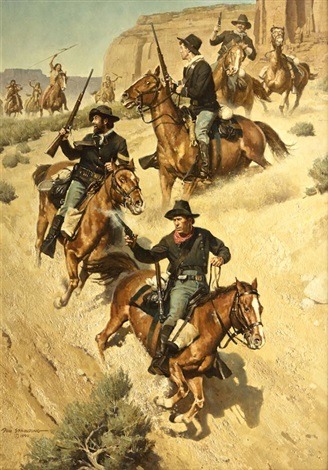
Patrol Under Fire by Don Spaulding
#us cavalry#american cavalry#american dragoons#american civil war#us dragoons#fort laramie#fort apache#union cavalry#plains indian wars#indian wars
7 notes
·
View notes
Text
Writers, Research Widely
Empire of the Summer Moon, by S. C. Gwynne, and The Last Comanche Chief, by Bill Neely Whether you’re a college student writing a paper, professional author, or someone in between, the way you research can determine pass or fail – or maybe something in between. But there are traps for you, the following being one of the most pernicious examples I can imagine. Some weeks ago I began watching…
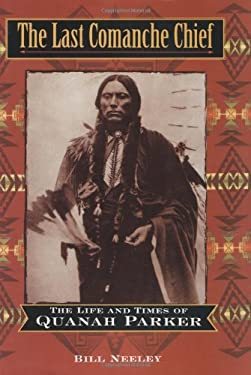
View On WordPress
2 notes
·
View notes
Text
The Lakota and Comanche were both aggressive imperialest powers too, It is just that the USA was bigger and better at it. For most native Americans, people not of their own tribe were not real human beings. That is true of most tribal cultures throughout history. For Example in their Native language Comanche means "human beings." Their empire was known as the Comancheria, from the 1750s to the 1850s, the Comanches were the dominant group in the Southwest and developed their own form of imperialism. Confronted with Spanish, Mexican, and U.S. outposts on their periphery in New Mexico, Texas, Louisiana, and Mexico, they fought to increase their own safety, prosperity and power. Their masterful skill as horse archers enabled them to dominate their neighbors until the Texas Rangers adopted Colt revolvers and equalized the combat. Disease was the single most dangerous threat to Native Americans. The Comanche managed to avoid disease, which gave them an upper hand over the Apaches and other tribes in this area. The great western film, The Searchers, is about the Comanche not the Lakota. The Lakota who had been an allies of the United State against other native peoples, were vaccinated against small pox and then exploited their superior numbers to expand at the expense of their less fortunate neighbors the Pawnee and Crow.
Ask the Crow or Pawnee people about how the Lakota invaded and stole their land. The nickname Sioux, meaning enemies, was given to them by their neighbors. The film Dances with Wolves also makes The Lakota invading and killing the Pawnee look like self defense. I have visited the Pine Ridge Lakota reservation in South Dakota, and did a portrait, from old photographs, of one of their chiefs for a school named after him. I did some reasearch on the old warrior and found out that he and his braves had once found a Pawnee village with the men away hunting and were just about to begin massacring the helpless women and children when the US cavalry arrived in the nick of time to stop them.
So the white folk of the USA were no better or worse than other peoples, they were just more successful.

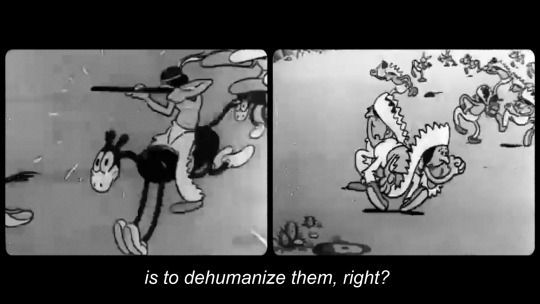
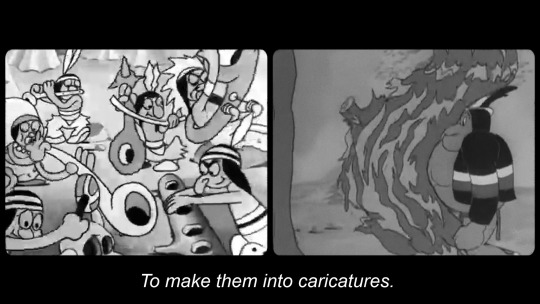
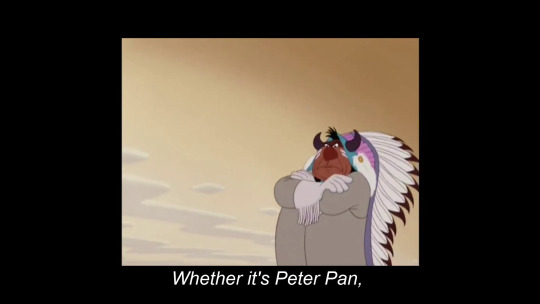


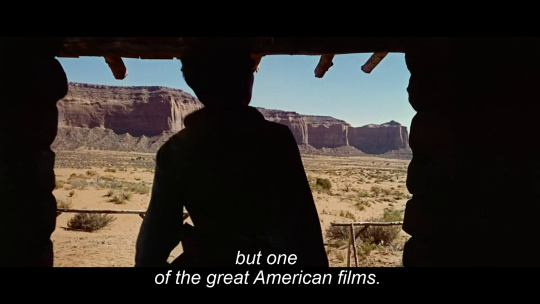
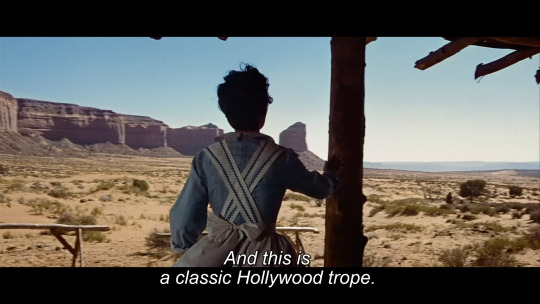

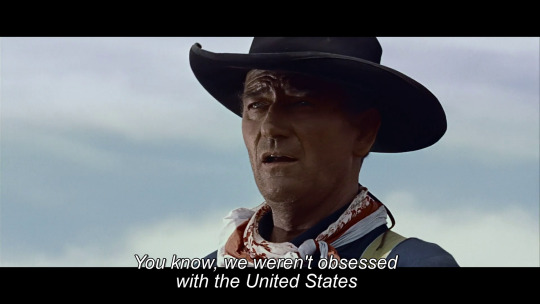
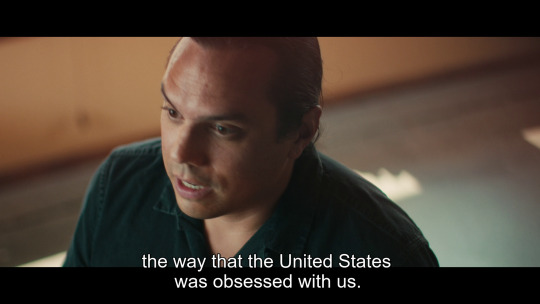
Lakota Nation vs. United States (Jesse Short Bull & Laura Tomaselli, 2022)
47K notes
·
View notes
Video
youtube
Conquering the Comanche | DESTROYING the most POWERFUL Indian Tribe in N...
1 note
·
View note
Text
But Daddy, I Love Him- Westward Expansion’s Impact
https://kit10phish-explains-it-all-45637244.hubspotpagebuilder.com/raw-my-uncensored-thoughts-and-opinions/but-daddy-i-love-him-westward-expansions-impact
View On WordPress
#analysis#BDILH#braid theory#buffalo#But Daddy I Love Him#capitalism#corruption#farming#genocide#gold#heroes#history#hunting#Indian#Indian Wars#language#massacre#murder#racism#religion#reservation#resources#slur#song#Taylor Swift#termonology#tribal elders#tribe#vocabulary#welfare
1 note
·
View note
Text
Today in Black Military History, the Americas between 1880 and 1914:
Today in Black Military history covering major events of the Americas between 1880 and 1914. The first case is a specific choice of historiography with one look at the more positive aspects of the legacy of the Buffalo Soldiers, one more negative, and then one focusing specifically on the broader aspects of the segregated US military that lasted until the Truman Administration.
A key point with this is that in certain ways the military both embodied elements of society around it and in certain ways there were specific rhythms to the actual realities versus how memory would otherwise have them. The United States Colored Troops forces formed in the War of the Rebellion endured through the Gilded Age and into the era of the World Wars.
What this meant in practice is that along with the cowboys being much Blacker than historical memory and movies made them out to be, so were the soldiers in the West. Black soldiers fought in the Cheyenne and Apache Wars, and shared with their fellow soldiers the unlovely experiences of garrison duties and the bitter shabby sequences of violent genocidal spasms of war between the imperial power of the United States and the individual bands of Indigenous peoples who were the last holdouts against it.
To be still more blunt, in this as in other things for the Black people who welcomed this, like this article says, it mattered greatly that Black people were allowed to participate in even a limited sense. That it was there at all mattered more than what it was, for if it was not this, it would be nothing. This is one of the bits of Victorian-age realpolitik that later generations have rather more choices with.....and which would help in the longer terms to store up all the problems that would come home to roost in the Vietnam War.
#lightdancer comments on history#black history month#military history#us history#gilded age#indian wars#buffalo soldiers
0 notes
Text
The Earth Is Weeping by Peter Cozzens
This is an excellent lecture by Peter Cozzens based on his book, The Earth Is Weeping, about the Indian Wars.
youtube
View On WordPress
0 notes
Text
Attack on Wagon Train

The Emigrants, Frederic Remington, between 1902 and 1906
60 notes
·
View notes
Text

Sarisoka
#since togruta have a lot of Indian influence I wanted to draw her in a sari#wish I added more detail but it is what it is#star wars#ahsoka tano#star wars fanart#my art#snawleyys art#star wars art#ahsoka#digital art#sw tcw#togruta
3K notes
·
View notes
Photo

#tweet#tweets#twitter#socialism#chattel slavery#american slavery#slavery#slave trade#thomas jefferson#james madison#american history#history#american indian#indian removal act#Indian Wars#totalitarianism#indigenous#genocide
45 notes
·
View notes
Text

Hostile Fire by Don Spaulding
#us cavalry#american cavalry#american dragoons#american civil war#us dragoons#fort apache#fort laramie#cavalry#union strong#plains indian wars#indian wars
4 notes
·
View notes
Text
Book Review: Days Without End by Sebastian Barry
Author: Sebastian Barry Title: Days Without End Narrator: Aidan Kelly Publication Info: Blackstone Publishing, 2017 Summary/Review: Set in the turbulent United States of the 1850s and 1860s, Days Without End is narrated by an Irish immigrant named Thomas McNulty. Having escaped the great hunger as a teenager, McNulty finds himself in the American West where he befriends fellow Irish immigrant…
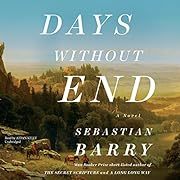
View On WordPress
#American Civil War#Audiobook#Book Reviews#Books#Historical Fiction#Indian Wars#Irish Immigrants#LGBTQ
0 notes
Text

The Earth Is All That Lasts: Crazy Horse, Sitting Bull, and the Last Stand of the Great Sioux Nation
A magisterial new history of the fierce final chapter of the "Indian Wars," told through the lives of the two most legendary and consequential American Indian leaders ON SALE NOW: https://amzn.to/3K8oRPJ
The Earth Is All That Lasts: Crazy Horse, Sitting Bull, and the Last Stand of the Great Sioux Nation
0 notes
Text

Today, we honor the legacy of Brian Thompson, who learned that healthcare for profit is a crime against humanity much too late to avoid the unquenchable fires of hell.


#brian thompson#rest in piss#rotinpiss#rot in hell#unitedhealth#united healthcare#unitedhealthgroup#class war#fuck ceos#ceos#ceo#usa is a terrorist state#usa is funding genocide#usa politics#usa news#usa#american indian#american#america#ausgov#politas#auspol#tasgov#taspol#australia#fuck neoliberals#neoliberal capitalism#anthony albanese#albanese government#health
421 notes
·
View notes
Video
youtube
Custer's Last Stand | Part 6 | The Charge of the 7th Cavalry
Two Brit Historians discuss the American Indian Wars.
0 notes